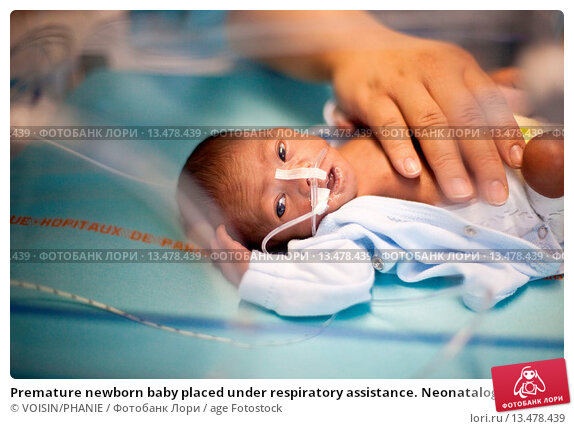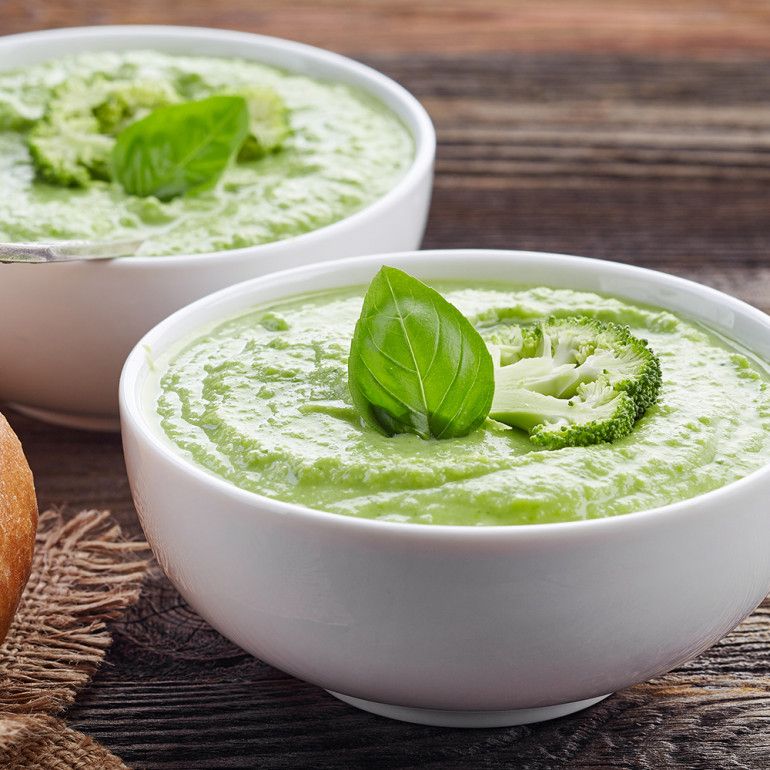Should you heat up baby food
How long does baby food last? Plus, how to prepare and store everything safely
You’ve perfected your little one’s favorite carrot purée recipe and nailed it when it comes to petite portion sizes, but now you’re wondering: How long does baby food last? While, unfortunately, there isn’t a one-size-fits-all rule when it comes to storing baby food — a lot of it depends on the ingredients and how it’s prepared — there are definite guidelines to follow.
In addition to baby food storage, there also are safety precautions to keep in mind when making, serving and reheating your little one’s food. (Who knew baby food could be so complicated?!) From food prep techniques that minimize the risk of foodborne illness to the proper way to refrigerate, freeze and thaw foods, here are answers to all your questions about keeping your baby’s food safe.
Are you supposed to heat up baby food?
When opening a new jar of baby food, there’s no need to heat it up. You can serve it at room temperature. However, when serving leftovers or food that’s been previously prepared and refrigerated, your little one, like you, probably doesn’t want to eat it cold. (Also, heating it up will zap bacteria. More on that in a bit.)
Is it safe to heat baby food in the microwave?
“The best way to warm up food is either in the microwave or stove,” says Natalia Stasenko, a registered dietician, child nutritionist and owner of Feeding Bytes. “If microwaving, transfer the food into a microwave-safe bowl and heat on high for about 15 seconds for every four ounces. Before serving, stir it well to make sure there aren’t any hot pockets and test it yourself.”
When reheating foods that contain meat or eggs, Stasenko recommends using the stove since the “high fat content may create overheating.”
How do you cook frozen baby food?
According to the Partnership for Food Safety Education, you should choose one of the following three ways to thaw food that’s been previously cooked and frozen:
Once food is defrosted, it should be cooked in the ways recommended above and then cooled to a lukewarm temperature before serving.
What temperature should baby food be?
Bacteria have been killed once the internal temperature reaches 165 F. The best way to ensure refrigerated or frozen food has been sufficiently reheated is to check it with a food thermometer.
Can you save leftover baby food?
Storing baby food once it’s been opened or freshly made depends on both the ingredients, as well as how it’s been prepared. Typically, store-bought food lasts a bit longer than any foods you make from scratch.
Once you open a jar of baby food, place the unused portion in the fridge quickly. According to the Food and Drug Administration (FDA), baby food that has been opened but not refrigerated should be consumed within two hours — possibly less, depending on the food.
“Fruits and vegetables may stay out a bit longer, but meat and poultry should be placed immediately in the fridge to avoid bacterial overgrowth at room temperatures,” says Dr. Sara Siddiqui, a pediatrician and clinical assistant professor in the Department of Pediatrics at NYU Langone’s Hassenfeld Children’s Hospital in New York.
Is it OK to reheat baby food?
“Never reheat cooked food more than once,” Stasenko says. “Doing so can increase the risk of food poisoning.”
So after heating food up for your baby once, toss whatever goes uneaten, even if you didn’t serve it.
How long does baby food last in the fridge?
“Homemade baby food doesn’t last quite as long as jars and pouches from the store,” Stasenko says.
Here are some storage guidelines to follow for both store-bought and homemade baby food.
For store-bought baby food:“Generally, once opened, fruits and vegetables will last 48 hours in the fridge after opening,” says Siddiqui. “Meats, poultry and eggs should only be stored up to 24 hours.”
For homemade baby food:“Homemade baby fruits and vegetables should be used within 24 to 48 hours, storing any unused and uncontaminated portions in the refrigerator,” says Siddiqui. “Meats, poultry and eggs should be stored no longer than 24 hours. ”
”
How long does baby food last in the freezer?
Baby foods can be frozen for up to three months, says Siddiqui, when they are stored in freezer-proof containers or ice cube trays that have been covered with heavy duty plastic wrap.
What are the other basics of baby food safety?
Every parent and caregiver making, handling or serving baby food should be aware of these standard safety rules.
Keep things cleanWhether you’re making your own baby food or serving up store-bought goodness, it’s important to be sure everything — and we do mean everything — is clean for baby’s mealtime.
“Parents need to make sure all food prep surfaces, utensils, cutting boards and storage jars are clean and have been washed with hot, soapy water,” says Siddiqui. “Washing hands thoroughly and frequently during food prep and storage will reduce potential contamination, as well.”
The Partnership for Food Safety Education, a nonprofit food safety organization, also stresses the importance of having a designated spot for diaper changing, which — need we even tell you? — should never be the kitchen. And scrubbing up after a diaper change (pee or poo) should always be a nonnegotiable since — brace yourself — “hands contaminated with feces play a significant role in the spread of many bacteria and viruses that can cause food poisoning.”
And scrubbing up after a diaper change (pee or poo) should always be a nonnegotiable since — brace yourself — “hands contaminated with feces play a significant role in the spread of many bacteria and viruses that can cause food poisoning.”
If you have an older child who’s able to use utensils or pick up food on their own, make sure they clean their hands, as well. If possible, have them use warm water with soap, which has been proven to be more effective than hand sanitizers.
Beware of cross-contaminationWhile the words “fewer dishes to clean” are music to any parent’s ear, serving your baby food straight from the jar isn’t recommended.
“In order to decrease contamination from normal germs found in saliva, it is best to remove the food that’s needed and serve in a separate container,” says Siddiqui. “Afterwards, discard any food from baby’s bowl that they haven’t eaten since, again, it’s come in contact with saliva.”
On the front-end, take steps to avoid cross-contamination during food prep.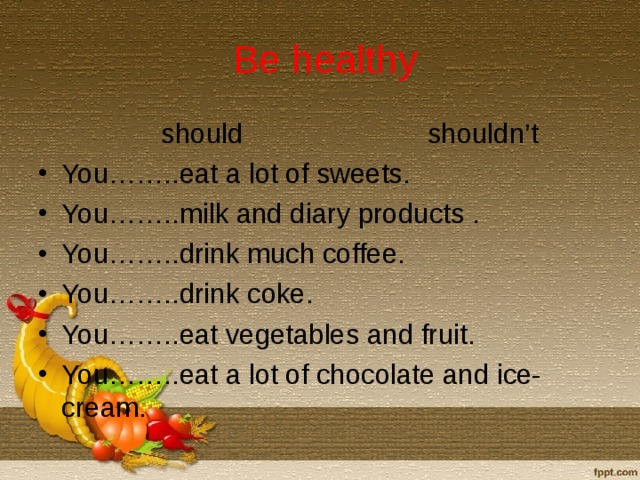
“When making your own baby food, be sure to always use a separate chopping board and knife for raw meat and poultry,” says Stasenko. “Also, keep raw meat and poultry covered and separate from other products in the fridge.”
Carefully inspectIn addition to taking care to properly prepare, store and reheat food, read labels. When using store-bought baby food, be sure to both check the expiration date and make sure the jar lid “pops” when opening it. If it doesn’t, or if you notice chipped glass or rust under the lid, the FDA advises discarding the food. For baby food pouches, make sure the seal isn’t broken.
Food Safety | Go to guide: preparing, freezing and reheating foods for baby
There’s no doubt that there are so many exciting things to think about when you begin your weaning journey with your little one; choosing a highchair, shopping for snazzy bibs, debating which cup and cutlery is best and deciding what amazing tastes to expose your baby to first… but it’s important not to forget that amongst all of this, any food you serve needs to be safe! Babies and young children don’t have the same immune system as us adults (or even older children) so food safety is essential.
 We need to make sure we’re extra careful with their little tummies!It is estimated that there are 2.4 million cases of food-borne illness in the UK every year but it’s not just restaurants that cause food poisoning – cooking at home can also make you (or your family) sick. The good news is that there are so many things you can do whilst preparing food to prevent this happening. Below, we give our top tips for baby food safety.
We need to make sure we’re extra careful with their little tummies!It is estimated that there are 2.4 million cases of food-borne illness in the UK every year but it’s not just restaurants that cause food poisoning – cooking at home can also make you (or your family) sick. The good news is that there are so many things you can do whilst preparing food to prevent this happening. Below, we give our top tips for baby food safety.Keep it clean
When it comes to food safety, keeping clean is so important. In reality, this doesn’t mean having a ‘spotless’ kitchen but instead, a clean environment where you prepare food, with clean hands, using clean equipment! Here are some top tips to help you organise your kitchen and help you safely prepare meals for your baby and the rest of the family:
- Wash your hands – always wash your hands thoroughly before preparing any food, and particularly after handling raw meat
- Clean work surfaces – disinfect food preparation surfaces using a clean dishcloth before starting any food prep.
 If you can, use a paper towel squirted with antibacterial spray to clean surfaces after preparing raw meat and poultry as this will help to make sure that you don’t pick up food poisoning germs and spread them around the kitchen
If you can, use a paper towel squirted with antibacterial spray to clean surfaces after preparing raw meat and poultry as this will help to make sure that you don’t pick up food poisoning germs and spread them around the kitchen - Clean utensils – make sure equipment is clean before you start using it and if you can, opt for colour coded equipment to reduce the risk of cross contamination between raw and ready to eat foods. Never prepare ready to eat food such as salad on a board that was previously used to prepare raw meat
- Wash fruit and veg – they might be low risk foods, but bacteria can also be found on fruit and veggies too so don’t forget to wash these thoroughly under cold running water before serving to baby. If you’re using frozen veggies in baby’s food, make sure that these are cooked according to the back of pack information before serving to your baby.
- Don’t be tempted to wash raw chicken! – washing your chicken will not ‘wash off’ the bacteria (only cooking will make it safe to eat!).
 If you wash chicken, instead you are more likely to cause food poisoning by inadvertently spreading more bacteria around the kitchen.
If you wash chicken, instead you are more likely to cause food poisoning by inadvertently spreading more bacteria around the kitchen.
Food Safety – Cooking food for your baby checklist!
Cooking veggies by steaming, boiling or roasting is pretty straightforward, but those first tastes don’t last for long and you’ll soon be branching out to more exciting foods for your baby to try, many of which may include meat or fish. Regardless of how you serve meat to your little one, it’s important to make sure that it is thoroughly cooked.
Remember – just because it’s cooked on the outside, doesn’t mean it’s cooked on the inside! Here’s how you can check that meat is safe for your baby to eat…
- Use a food probe - checking the temperature of the thickest part of the meat is the most accurate way (and the way I would recommend) to check food is cooked, whilst also making sure it is not overcooked! If using a probe, make sure the probe is clean and the meat has a core temperature of 75C for at least 30 seconds.

- Cut into the thickest part of the meat to make sure there is no pink meat visible
- The meat must be steaming hot throughout
- Meat juices run clear
If you find your baby puree needs thinning after cooking, check out Jenna’s article Top tips for thinning baby purees
Cool foods quickly
I am a huge fan of keeping leftovers to use as an easy meal another day! After cooking, make sure you cool any leftovers and pop into the fridge or freezer as soon as possible. Never allow food to sit out on the side for more than 2 hours after cooking.
Be aware that simply putting your hot food in the fridge may not be enough to make sure it is cooled down quickly and safely. There are lots of things you can do to help speed up the cooling of food, such as dividing into smaller portions, using an ice bath or stirring regularly.
Keep leftovers for another day
Whatever your situation, whether you have children or not… reheating leftovers is always a good idea! As a rule of thumb, leftover food can be kept in the fridge and used within 2 days (1 day for rice) but if you want longer than this, then pop your leftovers in the freezer.
Even if you used raw meat or veg which was previously frozen, once cooked you can freeze the leftovers. Freezing “pauses” the growth of bacteria, locks in nutrients, prevents spoilage and ultimately helps reduce wastage!
Defrosting baby purees
If defrosting baby purees, the best way to do this would be overnight in the fridge and use within 24 hours. But, did you know that you can cook baby purees from frozen?!
Reheating baby purees
Baby purees are often best served at room temperature, but don’t be tempted to partially reheat food for your baby to avoid having to wait for it to cool. Unless served cold straight from the fridge, baby purees should always be reheated until piping hot, which means steaming throughout, to kill off bacteria.
The best ways to reheat baby purees are:
- On the hob
- In the microwave
If cooking a portion of baby puree from frozen, make sure you increase the cooking time and stir regularly (every 20 – 30 seconds) to ensure there are no hidden hot spots and that the puree is evenly heated so it is piping hot throughout.
Remember that foods can only be reheated once so make sure you divide your puree into baby friendly portions before storing in the fridge or freezer!
We hope these tips and tricks have helped you become more confident when it comes to food safety for your little ones!
Jenna is a fully qualified Environmental Health Practitioner specialising in food safety and public health.
She obtained a first-class Batchelor (BSc) degree in Environmental Health and has since qualified as an Environmental Health Practitioner with the Chartered Institute of Environmental Health (CIEH). Over the past 12 years she has worked in both the public and private sector advising businesses on all things food safety and public health.
Since becoming a Mum to her 2-year-old little girl Mia, she understands first-hand how much things change when you have a little one to think about too! She has always been passionate about food safety and her mission as Food Safety Mum is to help give parents confidence when cooking at home or when eating out and about!
For lots more food safety advice, follow Jenna on Instagram
@Foodsafetymum
What you need to know about tinned baby food
How do you heat up tinned baby vegetable puree?
There are several ways to heat up baby food:
The first way is to lower the jar of baby food up to the neck into warm (or hot) water, preferably open the lid and gently mix the contents of the jar.
the second way, hold the jar (it is desirable that the jar is not opened) under a stream of warm water. Put in a saucepan, open the water warm and put under a stream of water.
You can put the contents on a plate and put them in the microwave for a certain time, after heating, you need to stir and try to determine the temperature (maybe the dish is not completely warmed up).
I did the old and proven way, both vegetable and fruit. We heat the water and pour it into a deep bowl or plate, in which a jar would fit. And then you just need to put a jar of mashed potatoes there and wait until it warms up. In the same way, you can cool, for example, a bottle, only in cold water.
Yes, there are indeed several ways to warm bottles.
You can use a microwave oven, heat it up in a steam bath, but the old method is fine for me personally - just put a jar of baby puree in hot water.
Another option is to use special electric bottle warmers.
Their advantage is that they can constantly maintain the desired temperature.
This is especially convenient if you feed your baby at night, you can cook everything in the evening, put a jar of mashed potatoes or water for the mixture in an electric heater and you will constantly maintain the temperature in it, so you can immediately take it out and feed or make the mixture not spending time heating water.
These heaters are small and compact, making them easy to carry around.
You can use a microwave oven, heat it up in a steam bath, but the old method is fine for me personally - just put a jar of baby puree in hot water.
How to make puree at home?
If you want to buy food in jars , then you can make puree at home. The most important rule: heat treatment fruits and vegetables should be minimal. This is necessary in order to preserve the greatest amount of essential vitamins and minerals in the products that you use to make puree. To do this, you can use a double boiler or a slow cooker.
To do this, you can use a double boiler or a slow cooker.
In addition, follow a few more general guidelines:
- Rinse all foods thoroughly under running water. This will make it possible to reduce the amount of pesticides on fruits and vegetables. Also rinse food before storage. This will help get rid of the chemicals;
- most of the toxic substances that are in the products are destroyed during the heat treatment. This applies to the chlorine compound. However, when boiling or stewing, they can get into the broth or juice. That is why when preparing food, the child is recommended to drain the water at least twice;
- You can also get rid of nitrates by pre-soaking root crops. Cut the food into small pieces and fill them with water for half an hour.
Tell me the recipe for applesauce.
Ingredients: for 10 cans of 0.5 l: 5.5 kg of unpeeled apples 900 g of sugar natural fruit preserves • Russian cuisine • Children's recipes weight of apples. Boil apples for about 10-15 minutes until softened, then rub them through a colander. Warm up the resulting applesauce and pack in prepared jars. Roll up jars with boiled lids and pasteurize. If you want to prepare applesauce with sugar, then for 1 kg of applesauce you need to add 100-150 g of sugar. Boil applesauce with sugar for 10-15 minutes, pack in jars and pasteurize at a temperature of 85 ° C: jars with a capacity of 350 ml - 13 minutes, 0.5 l - 15 minutes. Enjoy your meal!
Boil apples for about 10-15 minutes until softened, then rub them through a colander. Warm up the resulting applesauce and pack in prepared jars. Roll up jars with boiled lids and pasteurize. If you want to prepare applesauce with sugar, then for 1 kg of applesauce you need to add 100-150 g of sugar. Boil applesauce with sugar for 10-15 minutes, pack in jars and pasteurize at a temperature of 85 ° C: jars with a capacity of 350 ml - 13 minutes, 0.5 l - 15 minutes. Enjoy your meal!
When serving, place the puree in bowls and garnish with mint.
Ingredients: for 10 cans of 0.5 l: 5.5 kg of unpeeled apples 900 g of sugar natural canned fruits • Russian cuisine • Children's recipes Preparation: Wash the apples, cut out the damaged areas, put in an enamel pan and pour water at the rate of 10-15% from the weight of apples. Boil apples for about 10-15 minutes until softened, then rub them through a colander. Warm up the resulting applesauce and pack in prepared jars.
Roll up jars with boiled lids and pasteurize. If you want to prepare applesauce with sugar, then for 1 kg of applesauce you need to add 100-150 g of sugar. Boil applesauce with sugar for 10-15 minutes, pack in jars and pasteurize at a temperature of 85 ° C: jars with a capacity of 350 ml - 13 minutes, 0.5 l - 15 minutes. Enjoy your meal!
Instructions
Open the puree jar and put half of it into another container - a special container, a plate or an empty puree jar. I'll explain why half. At the beginning of complementary foods, puree is given in several spoons and you should not heat the entire jar if the child does not eat it at a time. When complementary foods have been introduced for a long time, they do not shift, but heat up the entire jar.
Pour hot tap water into a bowl and place the puree container in it. The water level should be up to the level of our puree or slightly higher. If the tap water is not hot enough, pour from the kettle, but not boiling water, but cooled down so that the jar does not crack.
Stir occasionally with a spoon. Depending on the temperature of the water, you need to wait 5-10 minutes. If the water cools too quickly, add new water. You don't need to overheat. We make fruit puree a little warmer than room temperature, vegetable puree even warmer, and meat puree for the longest time.
Interesting: After how many days you can eat salted tomatoes
Before you feed your baby, mix well and put a drop on your wrist to check the temperature. In this way, home-made mashed potatoes are also heated if the baby has not eaten everything at once.
The third way - the most optimal and efficient - is baby food warmer . Today it can be bought at any children's goods store. And for those parents who daily face the problem of how to heat baby puree
, it is highly recommended to purchase this useful device. It will save both time and effort, and the nerves of mom and baby.
Baby food warmers
work on the principle of the same water bath, only quickly and efficiently.
Baby drinks
Milk. As your baby learns to eat solid foods, his interest in bottled milk may decrease. Breastfed babies usually just change their feeding schedule. Experts believe that breast milk or formula should remain the main source of nutrition for a baby until about 1 year old.
Water. You can offer your baby boiled, cooled water from a baby sippy cup at every feed. Drinking cups with soft spouts are good for this age, but you can experiment to see which cup is best for your child. Remember that some kids don't drink from a cup at all until they're six months old or older, so be patient.
The baby probably won't like the water because it's not sweet, but insist on it anyway. Take a few sips from his cup yourself, turn it into a game, and don't expect your child to want to drink water on his own until you've offered it at least 20 times. And even then, he will only take one or two sips. Keep trying anyway, and eventually he will drink water, but for now, don't worry too much, because the baby gets enough liquid from milk and vegetable or fruit puree.
Juice. Resist the temptation to give your child fruit juice, even if it is diluted. Some may tell you that there is nothing wrong with diluted juice, but in terms of dental care, juice is harmful because fresh fruit contains a lot of sugar and acid. The baby sucks slowly from his drinking cup, and the juice will stay in the mouth for a long time, coming into contact with the teeth and causing cavities.
The only advantage of juice is that the child gets used to it faster than to water, because the juice tastes sweet. But once he tastes the juice, it will be almost impossible to convince him to drink water. And although juice contains healthy vitamin C, it is better to offer your child fresh fruits and vegetables that will not harm the teeth.
How to properly warm up baby food
For all mothers, the issue of baby nutrition has been and remains one of the top priorities. Therefore, one day every parent will face the problem of properly warming up baby food. How to reheat frozen breast milk? And how to heat baby puree
How to reheat frozen breast milk? And how to heat baby puree
?
There are three ways to warm baby food. The first way is to heat it up in the microwave. But this is the most “undesirable” way of warming up. Why? Because the food in the microwave is heated unevenly. It can be hot on top, but still cold inside. For mothers who store their milk frozen and then reheat it, the issue of temperature is important, so heating breast milk in the microwave is highly undesirable. You risk destroying all the valuable substances in such an irreplaceable and unique product. In addition, there are fundamental ideological opponents of microwave ovens, for whom this method of heating is completely unsuitable.
The second traditional method is to heat baby food in a water bath. It is safe, but rather long and troublesome. Pour boiling water into a bowl and put a container with food for the child. In another way, you can do it like this: put a saucepan on the stove, put a jar in it, water boils in the saucepan and warms the mashed potatoes. This method was used by our grandmothers and mothers, its only minus is the time that a young mother always has to spare.
This method was used by our grandmothers and mothers, its only minus is the time that a young mother always has to spare.
The third way - the most optimal and efficient - is baby food warmer . Today it can be bought at any children's goods store. And for those parents who daily face the problem of how to heat baby puree
, it is highly recommended to purchase this useful device. It will save both time and effort, and the nerves of mom and baby.
Baby food warmers
work on the principle of the same water bath, only quickly and efficiently.
Before how to warm baby puree
, open the jar and make sure you hear a pop - this is a simple test for the quality of the contents of the jar. After that, separate the part of the puree that the child will not eat into a separate plate or jar, and leave in the jar itself as much as you need to warm up. After that, put the jar in the baby food warmer, and after three to four minutes, the food for your baby will reach the desired temperature. Such a useful device will be an excellent and very necessary gift for a young mother. After all, she no longer has to worry about cups and saucepans for heating in a water bath. One of the obvious advantages of the heater is also the ability to set a fixed temperature for heating.
Such a useful device will be an excellent and very necessary gift for a young mother. After all, she no longer has to worry about cups and saucepans for heating in a water bath. One of the obvious advantages of the heater is also the ability to set a fixed temperature for heating.
With this handy addition, mommy's worries will be much easier and the question of "how to warm up baby puree" will simply no longer arise, and the baby will no longer have to whine for a long time, waiting for his breakfast to warm up.
You can warm up baby food in several ways:
Scheme for the introduction of vegetable complementary foods
First complementary foods: vegetable puree. Broccoli and cauliflower, zucchini and carrots are recommended to start the first feeding. Puree in the amount of 1 teaspoon from one vegetable should be given to the baby in the morning. This will help track if there is an allergic reaction to the introduction of complementary foods.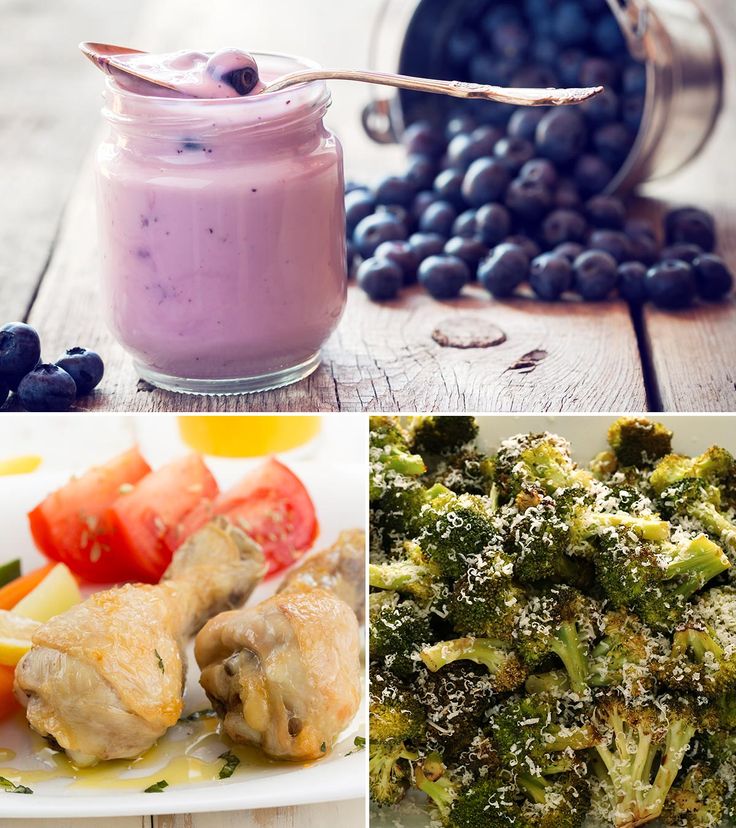 Every 2-3 days you need to increase the amount of puree, by 0.5-1 teaspoon, bringing it to 100 gram servings.
Every 2-3 days you need to increase the amount of puree, by 0.5-1 teaspoon, bringing it to 100 gram servings.
After, for example, cauliflower and zucchini have been introduced, they can be combined during the cooking process. The rest of the feeding is carried out according to the old scheme, the baby is supplemented with breast milk or formula.
Approximately within a week, the volume of puree can be increased to 100-150 grams, which will completely replace one feeding, but this portion is designed for a child older than six months. If you introduced complementary foods earlier, the portion should be slightly reduced.
Is it possible to salt
It is not recommended to add salt and sugar to children's meals, because vegetables and meat contain sodium, which will be enough so that the taste of the product does not seem insipid to the child. Namely, sodium (ordinary salt) irritates the mucous membrane in the stomach, thereby leading to the formation of inflammatory processes.
IMPORTANT! And excessive salt intake can even negatively affect the central nervous system, while the load on the kidneys increases, the load on the cardiovascular system increases, and besides, it slows down the metabolic processes in the body.
Which is better
Puree made from fresh vegetables
The best option for your baby's health is to cook vegetables yourself. In this case, you should choose fruits from your garden or farm, which are guaranteed to be free of nitrates and harmful impurities.
Be sure to pay attention to the appearance of the fruit - they should not show signs of damage - mold, dents and scratches, black spots. You need to choose dry vegetables with a matte sheen, small in size.
Frozen vegetable purée in winter
If vegetables are introduced into a child's diet at a time when fresh vegetables are hard to come by, frozen formula is a great choice. Vegetables need to be decomposed into portion bags, for one or two cooking steps, so as not to defrost them, because it is during repeated freezing that you can lose most of the vitamins in the composition.
For cooking, it is recommended to purchase a separate steamer or multicooker, but a special stand for a regular pot is also suitable. You will also need a blender, it’s good if it comes with a bowl and a separate nozzle in the form of a grinder.
Canned puree for first foods
High-quality canned food is not only sterile, but also homogeneous in consistency. Mom does not need to cook once again, in fact, a small portion of food for the baby - just open the jar and heat it to the desired temperature. In addition, it is so convenient to take a jar with you on the road or a long walk to refresh yourself with your usual food.
Before giving the puree to a baby, warm the jar in a water bath, or immediately transfer it to a child's plate and heat it in a microwave oven to a temperature of no more than 36-37C.
VERY IMPORTANT! The first spoon must be tasted by yourself, so you can feel the sign of spoilage, for example, the sharp taste of the product.

If it is a glass jar, then when opening it, there must be a characteristic cotton, which indicates the tightness of the prepared puree. And it is worth remembering that baby food does not contain salt and sugar, so an adult may not like it, but this does not mean that it is spoiled.
How do I reheat canned baby vegetable puree?
There are several ways to heat up baby food:
The first way is to lower the jar of baby food up to the neck into warm (possibly hot) water, preferably open the lid and gently mix the contents of the jar.
the second way, hold the jar (it is desirable that the jar is not opened) under a stream of warm water. Put in a saucepan, open the water warm and put under a stream of water.
You can put the contents on a plate and put them in the microwave oven for a certain time, after heating, you need to stir and try to determine the temperature (maybe the dish is not completely warmed up).
I made vegetables and fruits in the old and proven way.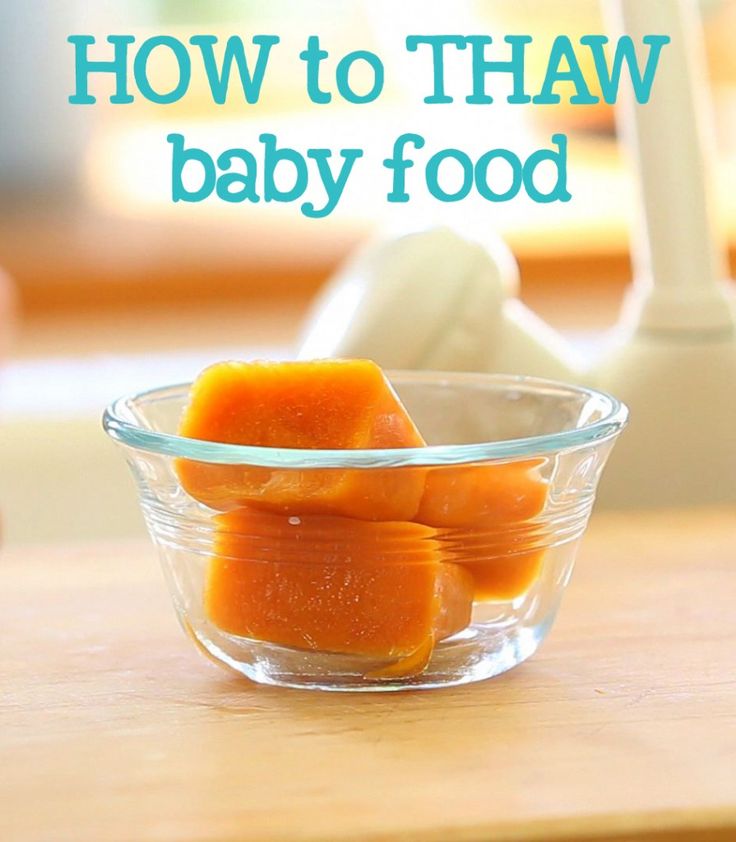 We heat the water and pour it into a deep bowl or plate, in which a jar would fit. And then you just need to put a jar of mashed potatoes there and wait until it warms up. In the same way, you can cool, for example, a bottle, only in cold water.
We heat the water and pour it into a deep bowl or plate, in which a jar would fit. And then you just need to put a jar of mashed potatoes there and wait until it warms up. In the same way, you can cool, for example, a bottle, only in cold water.
Yes, there are indeed several ways to warm bottles.
You can use a microwave oven, heat it up in a steam bath, but the old method is fine for me personally - just put a jar of baby puree in hot water.
Another option is to use special electric bottle warmers.
Their advantage is that they can constantly maintain the desired temperature.
This is especially convenient if you feed your baby at night, you can cook everything in the evening, put a jar of mashed potatoes or water for the mixture in an electric heater and you will constantly maintain the temperature in it, so you can immediately take it out and feed or make the mixture not. spending time heating water.
Interesting: How to Store Dried Persimmons
These warmers are small and compact, making them easy to carry around.
Baby food from a jar: harm or benefit for the baby?
With the slogan “All the best for children”, baby food manufacturers produce thousands of jars of fruits and vegetables every year, constantly fantasizing about the assortment. However, good intentions to feed the younger generation with something tasty and healthy, while saving mom's time, stumble upon parental criticism and skepticism.
Food from a jar appeared in the post-Soviet space relatively recently, but has already acquired myths, mistrust and accusations from grandmothers. Is canned food really so harmful and do children need it?
The main answer lies in a simple truth: food in a jar is needed not by a child, but by a mother. Children need a complete and balanced diet, nutrients and vitamins. A modern mother complains about the lack of time and difficult life. A compromise between the needs of adults and children has become ready, while brought to the desired consistency of fruits and vegetables.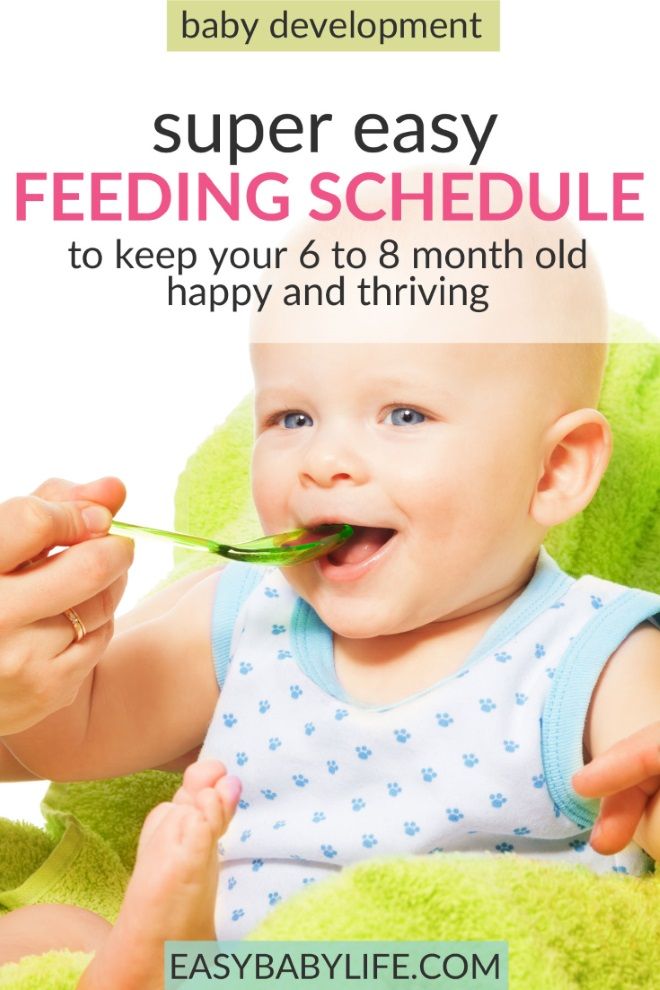 They allow you to save parental time on everyday cooking, washing dishes, going to markets and shops in search of quality broccoli or zucchini. Also, jars with ready-made delicacies help out perfectly during travels, walks and trips to visit. Each family has the right to choose food for their child based on the financial situation and free time.
They allow you to save parental time on everyday cooking, washing dishes, going to markets and shops in search of quality broccoli or zucchini. Also, jars with ready-made delicacies help out perfectly during travels, walks and trips to visit. Each family has the right to choose food for their child based on the financial situation and free time.
The opinion that canned food is devoid of nutrients is wrong. In the process of cooking, vegetables and fruits are subjected to gentle types of processing, at the end enriching the puree with beta-carotene, iron, potassium and vitamin C in doses approaching the daily requirement of children of the corresponding age.
Fans of buying products for the children's table in the market should take into account that many fruits and vegetables are grown along highways, in ecologically polluted areas, with the use of chemical fertilizers. Such "gifts of nature" may contain lead, radionuclides and nitrates, which is guaranteed to hit your baby's plate. When choosing products for children, purchase them from places of proven quality or from villagers.
When choosing products for children, purchase them from places of proven quality or from villagers.
Manufacturers of baby food that undergo regular safety checks are required to grow their products in accordance with a number of regulations and requirements. This, in turn, is a guarantee of quality and increases the chances of parents to feed their child with a healthy dessert.
The long shelf life of food jars does not indicate the presence of chemical preservatives in the composition (note: their use is strictly prohibited), but the use of modern technologies for the heat treatment of products and vacuum packaging that protects against the ingress and reproduction of bacteria. Colors, flavors, spices or flavorings are also absent in quality baby purees. In some cases, manufacturers add rice or corn flour to obtain a uniform consistency and reduce the cost of the finished product, but this is not a required ingredient in the composition.
Some parents notice that after a can of mashed potatoes, the child has difficulty switching to an adult table.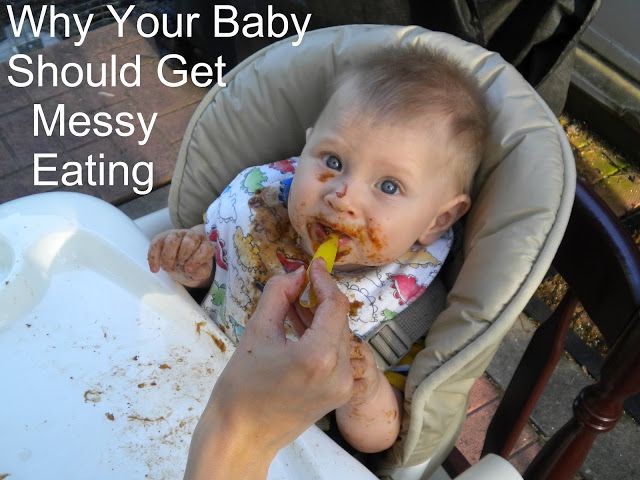 This happens if you feed the baby with a product that is not age appropriate. For six-month-old babies, manufacturers produce homogenized purees, for eight-month-olds - puree-like treats, for children older than 10 months - coarsely ground products. Products should be selected taking into account the degree of their grinding, depending on the age of the child and the development of the baby's ability to chew. Age-appropriate food from a jar gradually prepares the child's gastrointestinal tract for "adult" food. In the case when parents prepare a treat for the crumbs at home, the consistency of food must also be changed depending on age.
This happens if you feed the baby with a product that is not age appropriate. For six-month-old babies, manufacturers produce homogenized purees, for eight-month-olds - puree-like treats, for children older than 10 months - coarsely ground products. Products should be selected taking into account the degree of their grinding, depending on the age of the child and the development of the baby's ability to chew. Age-appropriate food from a jar gradually prepares the child's gastrointestinal tract for "adult" food. In the case when parents prepare a treat for the crumbs at home, the consistency of food must also be changed depending on age.
When choosing ready-made puree in jars, pay attention to the composition: it should contain only natural ingredients and no salt. Sugar is an undesirable component of children's food, try to avoid foods containing it. Fruit and vegetable treats should also not be expired, have signs of opening and deformation of the packaging. Items with an illegible or missing production date should be discarded. After opening the treat, a characteristic dull pop should sound, which indicates the suitability of the product and the correct production and storage conditions.
After opening the treat, a characteristic dull pop should sound, which indicates the suitability of the product and the correct production and storage conditions.
Motherhood should not turn into a feat, but remain a pleasure. A happy mother will always be more useful for a child than a mother exhausted by everyday life. When choosing canned food or cooking at home, consider your own free time, confidence in the quality of market products, and financial opportunities. Remember that canned food is not a replacement for normal plated food, but a way to optimize it and make life easier for mom.
Happy parenthood and delicious treats for your little one!
Elena Tour
Tell me the recipe for apple puree.
for 10 cans of 0.5 l:
5.5 kg of unpeeled apples
900 g of sugar Natural fruit preserves • Russian cuisine • Recipes for children % by weight of apples.
Boil the apples for about 10-15 minutes until softened, then rub them through a colander.
Warm up the resulting apple puree and pack it into prepared jars.
Roll up jars with boiled lids and pasteurize.
If you want to prepare apple puree with sugar, then add 100-150 g of sugar per 1 kg of apple puree.
Boil applesauce with sugar for 10-15 minutes, pack in jars and pasteurize at 85°C:
Usually it is gluten-free porridge (buckwheat, rice, corn), if the child is not gaining weight, or one-component vegetable puree.
Our first food. Delicious and tender puree: went with a bang. Answers to frequently asked questions.
I would like to share with you the experience of the first weaning, as well as the key information that I learned in preparation for this event.
I have two twin daughters and our very first food was zucchini puree from .
Squash puree "Spelenok" is sold in two versions: a glass jar and Tetra Pak. Tetra Pak is more profitable than a jar, it is larger in volume and at the same time cheaper. From the beginning, I doubted about Tetra Pak, whether it would contain normal mashed potatoes. I bought it, it turned out to be the same as in the jar.
From the beginning, I doubted about Tetra Pak, whether it would contain normal mashed potatoes. I bought it, it turned out to be the same as in the jar.
Zucchini is a natural source of pectin fibers and fine fiber. Zucchini puree is the first one-component vegetable puree in the assortment of the Spelyonok trademark. Produced from own raw materials grown and processed at the company's plant. Puree from light zucchini "Spelenok" is prepared without salt, starch and milk protein, therefore it is ideal for a hypoallergenic diet for babies with a risk of food allergies. Zucchini puree contains useful trace elements: potassium, magnesium, calcium and iron, necessary for the health of the child. Recommended as a first vegetable food.
- Light yellow-green color with small white patches.
- Thin, watery consistency.
- Tastes pleasant, slightly sweet.
- Contains only squash puree.
The date of manufacture is clearly marked on the package.
Contains marrow only.
I haven't noticed any allergic reactions in my children to marrow. The chair is fine.
What is recommended to start complementary foods?
Usually it is a gluten-free porridge (buckwheat, rice, corn), if the child is not gaining weight, or a one-component vegetable puree.
Our weight is fine, so we started with vegetables.
Complementary foods are recommended to start with cauliflower, broccoli or zucchini.
We chose zucchini because cabbage has an unpleasant smell, is not very tasty and, as far as I know, can increase fermentation and gas formation in the intestines. Therefore, I will not give them either cauliflower or broccoli, I think that a catastrophe will not happen because of this.
Complementary foods are currently recommended to be introduced from six months of age.
I am not in a hurry with complementary foods. I do not strive to quickly feed the children more and more varied. Zucchini began to give, somewhere in 6.5 months. Children by this time already showed food interest, so they ate mashed potatoes willingly.
Zucchini began to give, somewhere in 6.5 months. Children by this time already showed food interest, so they ate mashed potatoes willingly.
Any new product is recommended to be introduced gradually. Starting with a spoon and bringing to the age norm. The purpose of complementary foods is to introduce the child to new foods. It is undesirable to give two new products at the same time.
I started giving zucchini to my children from half a very small spoon. The next day, a spoonful, then one and a half, and so on.
At the beginning, I put the right amount of mashed potatoes on a plate and heated it in the microwave. As far as I know, there is no harm in this, the only negative: uneven heating. But my relatives protested: it oxidizes. I do not know what can be oxidized there and whether it is oxidized. But after that, the heated puree began to seem sour to me. Maybe inspired, or maybe it is.
After that, I started heating the puree on gas, in a saucepan with water. I put an open jar or Tetra Pak in a saucepan with water and sent it to gas. Stirred, tasted, controlled the temperature.
I put an open jar or Tetra Pak in a saucepan with water and sent it to gas. Stirred, tasted, controlled the temperature.
I didn't study the feeding recommendations. If the child is already sitting, then it is possible in a high chair, if not, then it is undesirable. At the very beginning of complementary foods, I gave mashed potatoes to children right in their beds. She turned her over on her tummy and fed her with a spoon.
It is recommended to give a new complementary food in the morning, so that during the day you can monitor the well-being and reaction of the child to a new food. At first, I gave puree in the morning, and then when the product became familiar to the child, I could give it at different times, including in the evening.
Precisely from a spoon (not from a bottle), because the food must be processed by saliva enzymes. It is important. It is recommended to buy special silicone spoons. But we ate and eat from a very small metal one.
Interesting: How many days minced meat can be stored in the refrigerator
This is my experience. It should be borne in mind that each child is individual, you need to monitor your child's reactions to new foods and adapt to them. Consult with pediatricians. Study literature. Health to you and your kids.
It should be borne in mind that each child is individual, you need to monitor your child's reactions to new foods and adapt to them. Consult with pediatricians. Study literature. Health to you and your kids.
I invite me to read, my reviews about other products children :
Here people know how to create a problem for themselves:
Yak Correctly Pidigrevati Sumysh
BUVA, Mom Sumysh, Ditina vid not ї vіdmovitsya, but through pіvgodini її appetite prokinetsya. Zvichayno, for the whole hour sumish okholone. How about obov’yazkovo recreate a new portion, or can you just save the platter in the refrigerator? How can you play the child crazy, how did it get cold, or the food was left unfinished?
You can bring baby sumish
As a rule, you don’t nurse the baby sumish, shards of milk powder are diluted in warm water before the anniversary. Really, the children are good at drinking the sum of the room temperature, or a bit of cooling. Ready for some summish, before the vzhivnannyam, they transfer the obov’yazkove rozіvannya so, as I say in the instructions - do not give them cold children.
Ready for some summish, before the vzhivnannyam, they transfer the obov’yazkove rozіvannya so, as I say in the instructions - do not give them cold children.
You need to save the sum
Deakers allow the possibility of reheating the prepared sum after refrigeration and storage in the refrigerator, otherwise it is not recommended to save the sum until a year later. It’s better for him to play it safe and don’t prepare a meal for a long time, so as not to destroy the poisoning of silence. You can spread the sum of money in the world of necessity, for which you don’t need folding clothes. On trips, manually dispense water from a thermos. At the car, you can play a little plyashechka - only with water - you can use compact mini-heaters, which can be connected to a smoker.
6Riziki, salvo Zberezny Ta repeatedly Pіdigriv Sumyshi
Chika Rosigrivati Dytyach Sumysh in Mikrokhvilovtsi
Bagato bahtiyo di -il dig. But it is necessary to take into account the fact that the temperature of the rivers, heated in micro-furnaces, is not the same at the edges of the container and in the center.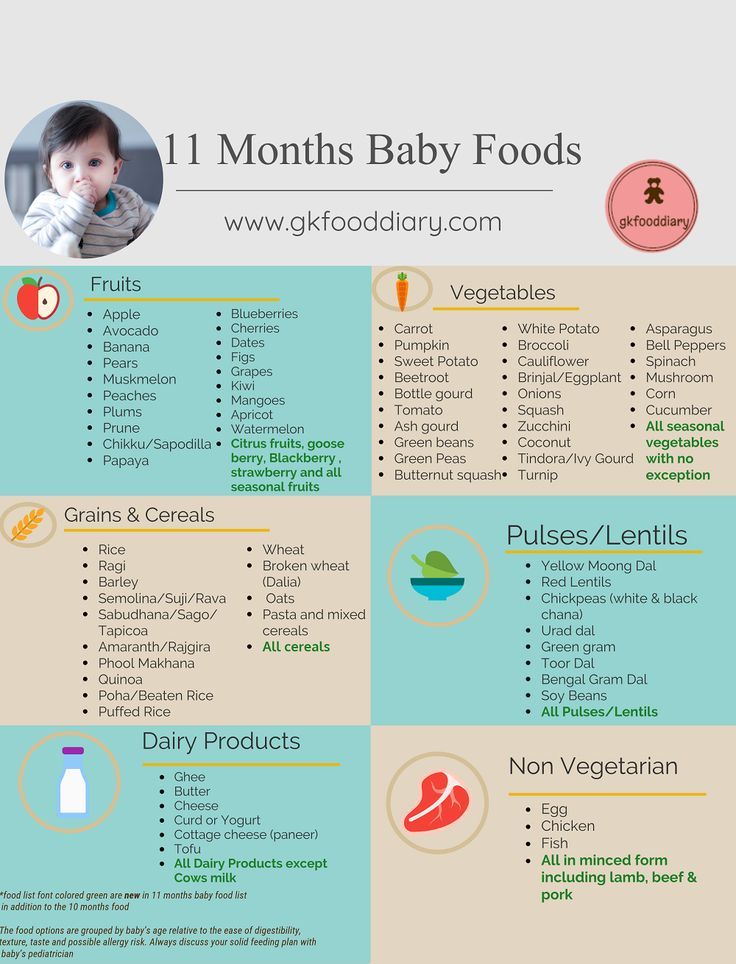 Choose the minimum tension and the longer heating period, the sum can be overheated (like under a jet of hot water). Under the tidal wave of high temperatures, the milk proteins will burn out, the vitamins will be used, alive bifidobacteria and other fundamental power of the product.
Choose the minimum tension and the longer heating period, the sum can be overheated (like under a jet of hot water). Under the tidal wave of high temperatures, the milk proteins will burn out, the vitamins will be used, alive bifidobacteria and other fundamental power of the product.
Ready-made formulas for safe heating in balls with an additional water bath, electric heater or warm running water. For the dissolved powder formula, there may be extreme caution.
Skіlki is ready baby sumish can be kept in the refrigerator
In the packing of tetrapacks baby sumish in the refrigerator is stored until vіdkrittya under temperature conditions and in terms, as having designated the brewing plant. It was poured from packing into a dance and it was summed up in a wink.
How much it can cost to grow a child of sumish and how to grow sumish
Only diluted in water sumish does not require pіdіgіvannya and vikoristovuєtsya for a long time. If the child has not finished eating the little balls, then it is not possible to save, heat up and drink victorious food again. At the refrigerator, I’ll save a small plyashechka with a sum (for not smoking a baby) the fathers save for their judgment, but no more than two years under a sterile sealed cap. At room temperature, the plaque is not overwhelmed, the shards in the heat of the sum can dry up.
At the refrigerator, I’ll save a small plyashechka with a sum (for not smoking a baby) the fathers save for their judgment, but no more than two years under a sterile sealed cap. At room temperature, the plaque is not overwhelmed, the shards in the heat of the sum can dry up.
Everyone knows that a little child needs a fresh hedgehog. If you want to find out what kind of crazy people you can save, doctors recommend to start preparing a little dance before the anniversary. To save an hour, it’s better to add a few portions of dry powder and warm water. It will be safer for you, and safer for children.
*Ideal life for not having mother's milk. WHO recommends exclusive breastfeeding in the first 6 months. MAMAKO® supports this recommendation. Before introducing new products into the diet of a baby, consult with a trader.
I am introducing complementary foods. Questions.
1. Open the jar, simply place it in a container of boiling water and stir occasionally until the puree is slightly warm. In general, everything is heated in the microwave and nothing terrible happens! )) 2. Water can be measured with a water thermometer 3. Yes, you need to mix the vegetables at first, you won’t immediately give the baby a whole jar, but starting with 1 teaspoon! And then, when the baby is already familiar with new vegetables and tolerates them normally, you can buy two- or three-component purees from those types of vegetables and fruits with which he is familiar. 4. It is better to give all new products in the morning so that you can follow the reaction during the day. Let's have vegetables for lunch. 5. There are rules for each age, look on the internet. And the liquid yes, also introduce a little bit. 6. Yes, I kept the jars for a day and gave them to the trail. day, slightly warm.
In general, everything is heated in the microwave and nothing terrible happens! )) 2. Water can be measured with a water thermometer 3. Yes, you need to mix the vegetables at first, you won’t immediately give the baby a whole jar, but starting with 1 teaspoon! And then, when the baby is already familiar with new vegetables and tolerates them normally, you can buy two- or three-component purees from those types of vegetables and fruits with which he is familiar. 4. It is better to give all new products in the morning so that you can follow the reaction during the day. Let's have vegetables for lunch. 5. There are rules for each age, look on the internet. And the liquid yes, also introduce a little bit. 6. Yes, I kept the jars for a day and gave them to the trail. day, slightly warm.
As for jars, I think you are right, it is best to introduce complementary foods from jars, as all doctors advised us. And we switched to “adult” food somewhere in a year or a little later.
1.
Open the jar, simply place it in a container of boiling water and stir occasionally until the puree is slightly warm. In general, everything is heated in the microwave and nothing terrible happens! )) 2. Water can be measured with a water thermometer 3. Yes, you need to mix the vegetables at first, you won’t immediately give the baby a whole jar, but starting with 1 teaspoon! And then, when the baby is already familiar with new vegetables and tolerates them normally, you can buy two- or three-component purees from those types of vegetables and fruits with which he is familiar. 4. It is better to give all new products in the morning so that you can follow the reaction during the day. Let's have vegetables for lunch. 5. There are rules for each age, look on the internet. And the liquid yes, also introduce a little bit. 6. Yes, I kept the jars for a day and gave them to the trail. day, slightly warm.
First food: vegetable puree
Your baby has grown a little after birth, and it is time for him to introduce new dishes and foods to his diet.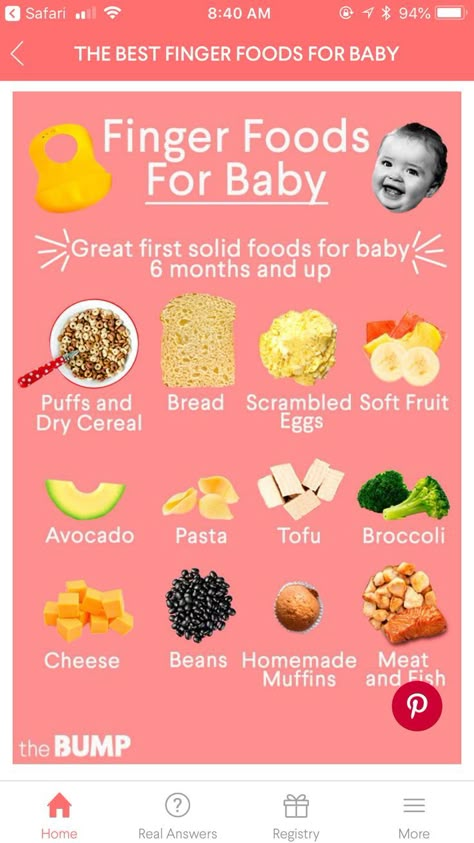 It is recommended to start the first complementary foods for babies with vegetable purees if they are completely healthy and develop properly, or with cereal porridges - with deficiencies in body weight. So, how to introduce the first complementary foods in the form of vegetable puree, we read in this article.
It is recommended to start the first complementary foods for babies with vegetable purees if they are completely healthy and develop properly, or with cereal porridges - with deficiencies in body weight. So, how to introduce the first complementary foods in the form of vegetable puree, we read in this article.
Vegetables contain a lot of pectin and vegetable fiber, organic acids and vitamins, a complex of microelements necessary for a growing organism. And even despite the seeming lightness of vegetables, their benefits in the child's diet are undeniable, but they should also be included in the menu in the right way.
Microwave baby food: can or can't reheat
Microwave baby food is easy to reheat - saves a lot of time. Just a couple of minutes, and the job is done: milk, porridge or mashed potatoes are warm. But mothers are worried: does food become harmful if it is heated in a microwave oven? There are so many conflicting rumors about the influence of microwaves - what is true and what is fiction?
Useful or harmful
Microwave ovens have settled in almost every kitchen, save time for their owners, facilitate kitchen chores. The operation of a microwave oven is based on the action of electromagnetic waves. Microwaves are harmful to humans, so there is debate about the usefulness of food prepared with their help. Many scientists claim that food from a microwave oven is completely safe, stories about the remnants of radiation in it are a myth. The power is too low to somehow affect the body.
The operation of a microwave oven is based on the action of electromagnetic waves. Microwaves are harmful to humans, so there is debate about the usefulness of food prepared with their help. Many scientists claim that food from a microwave oven is completely safe, stories about the remnants of radiation in it are a myth. The power is too low to somehow affect the body.
Users ask if vitamins are preserved in the microwave. Yes, and there are more of them than in food prepared in the usual way. The reason is the short duration of the process. Dishes are prepared many times faster, less useful substances are destroyed. Another positive point is that there is no need to add oils and fats, so the food turns out to be dietary, almost like in a double boiler.
About breast milk
Breastfeeding mothers wonder if breast milk can be heated in the microwave. Definitely - no! Expressed milk must not be heated with microwaves. They act on immunoglobulins and other living components, kill them or at least change their structure.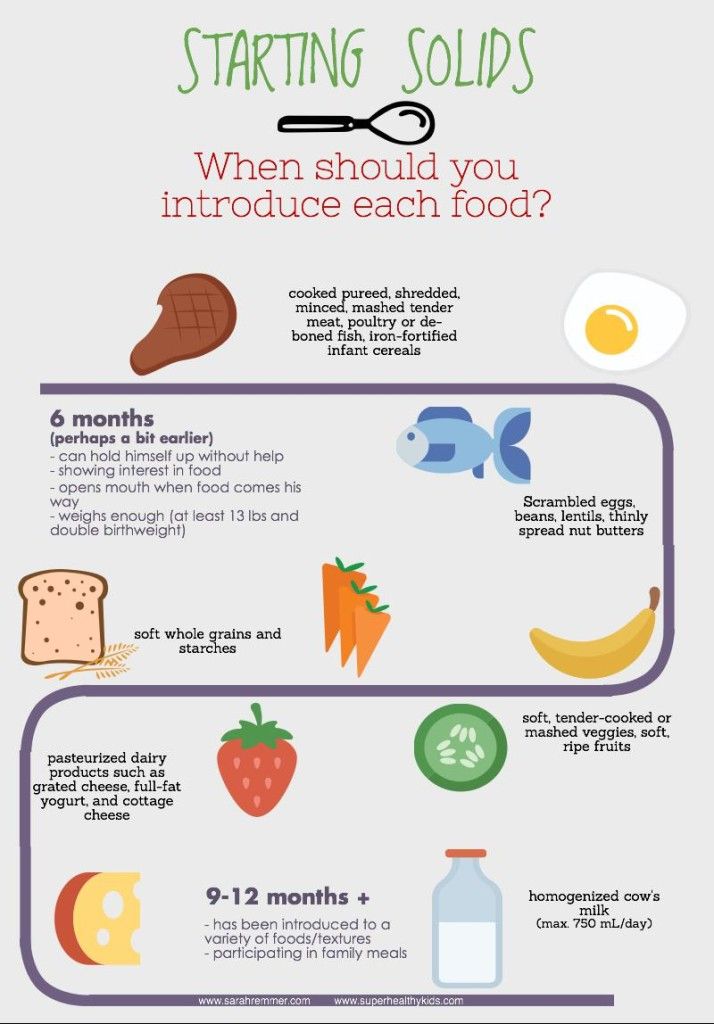 You will get from the cell not priceless food, but a little useful liquid, comparable to cow's milk.
You will get from the cell not priceless food, but a little useful liquid, comparable to cow's milk.
Heating of mother's milk in the microwave chamber is strictly prohibited - it is heated only in warm water, in a water bath.
Is it possible to heat artificial mixtures
If you need to heat artificial food, it is better to use the old proven method - hot water. But you can still take advantage of the microwave oven: heat water in it, in which you put milk or baby puree.
If you need to warm up a bottle of formula in a café, ask for a large cup of hot water. Put the bottle in it and heat the mixture.
What pediatricians and gastroenterologists say
Children's doctors advise parents not to heat formula or heat milk in the microwave. In general, you should not cook food for kids in it - in any form, doctors insist. Disputes about the dangers of microwaves are ongoing, which means that it is not worth risking the health of a child.





